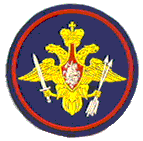Discoverer of quasars.
https://www.npr.org/2018/09/06/64525711 ... lion-prize
Jocelyn Bell Burnrll
4 posts
• Page 1 of 1
Jocelyn Bell Burnrll
"Do not speak badly of yourself, for the warrior that is inside you hears your words and is lessened by them." -David Gemmel
-

SciFi Chick - Information Goddess
- Posts: 3240
- Joined: Mon May 27, 2013 4:04 pm
Re: Jocelyn Bell Burnrll
I met her back in January at Oxford when she came to my talk. She is a nice lady. This quote at the end sure drives that point home IMO-
Also, because she decided she doesn't need $3 million, she is using the money to fund researchers who are women, minorities, or refugees who suffer from unconscious bias. As I said, class act.
"I feel I've done very well out of not getting a Nobel prize," she told the Guardian. "If you get a Nobel prize you have this fantastic week and then nobody gives you anything else. If you don't get a Nobel prize you get everything that moves. Almost every year there's been some sort of party because I've got another award. That's much more fun."
Also, because she decided she doesn't need $3 million, she is using the money to fund researchers who are women, minorities, or refugees who suffer from unconscious bias. As I said, class act.
Yes, I have a life. It's quite different from yours.
-

Rommie - Posts: 4053
- Joined: Mon May 27, 2013 10:04 am
Re: Jocelyn Bell Burnrll
Reading up on her, it seems that not including here when her Boss's prize was awarded caused some issues back in 1974
From Wikipedia
From Wikipedia
The 1974 prize went to Martin Ryle and Antony Hewish "for their pioneering research in radio astrophysics: Ryle for his observations and inventions, in particular of the aperture synthesis technique, and Hewish for his decisive role in the discovery of pulsars". Hewish was not the first to correctly explain pulsars, initially describing them as communications from "Little Green Men" (LGM-1) in outer space. David Staelin and Edward Reifenstein, of the National Radio Astronomy Observatory in Green Bank, West Virginia, found a pulsar at the center of the Crab Nebula. The notion that pulsars were neutron stars, leftovers from a supernova explosion, had been proposed in 1933. Soon after their 1967 discovery, Fred Hoyle and astronomer Thomas Gold correctly explained it as a rapidly spinning neutron star with a strong magnetic field, emitting radio waves. Jocelyn Bell Burnell, Hewish's graduate student, was not recognized, although she was the first to notice the stellar radio source that was later recognized as a pulsar.[138] While Hoyle argued that Bell should have been included in the prize, Bell said, "I believe it would demean Nobel Prizes if they were awarded to research students, except in very exceptional cases, and I do not believe this is one of them."[139] Prize-winning research students include Louis de Broglie, Rudolf Mössbauer, Douglas Osheroff, Gerard 't Hooft, John Forbes Nash, Jr., John Robert Schrieffer and H. David Politzer.
Sic Transit Gloria Mundi
-

Sigma_Orionis - Resident Oppressed Latino
- Posts: 4496
- Joined: Mon May 27, 2013 2:19 am
- Location: The "Glorious Socialist" Land of Chavez
Re: Jocelyn Bell Burnrll
Yes. My experience amongst astronomers is everyone agrees that Jocelyn should have been awarded the Nobel Prize, except Jocelyn herself. And the Nobel committee is now very careful to make sure students are also awarded the prize if they're on the work.
Yes, I have a life. It's quite different from yours.
-

Rommie - Posts: 4053
- Joined: Mon May 27, 2013 10:04 am
4 posts
• Page 1 of 1
Who is online
Users browsing this forum: No registered users and 12 guests
